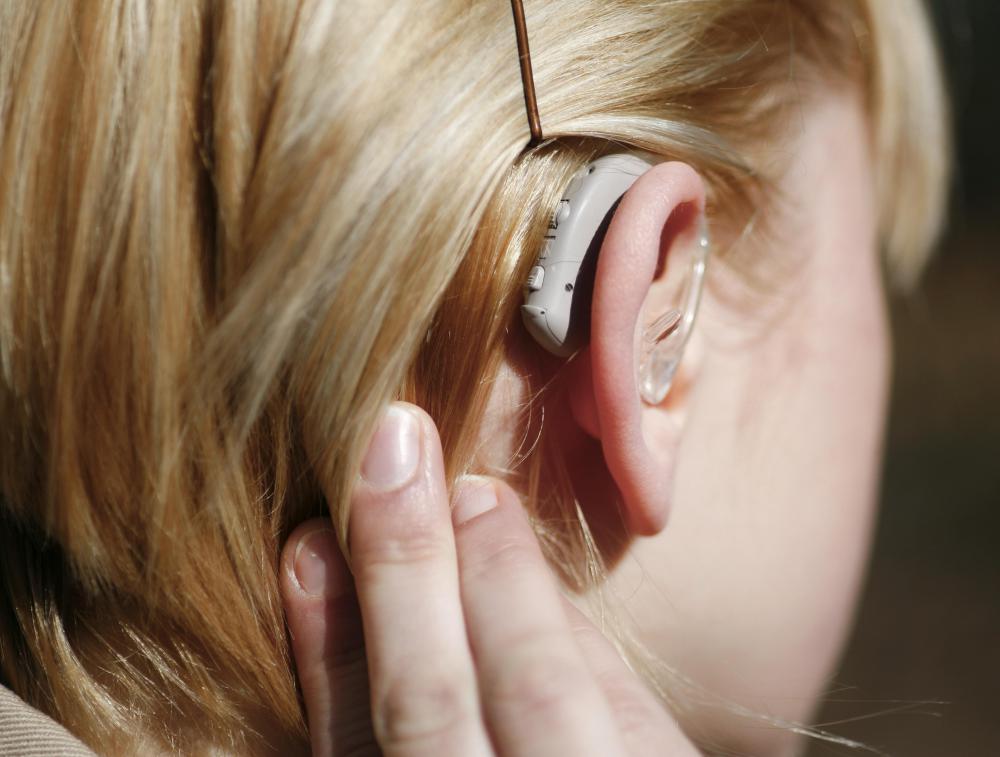At WiseGEEK, we're committed to delivering accurate, trustworthy information. Our expert-authored content is rigorously fact-checked and sourced from credible authorities. Discover how we uphold the highest standards in providing you with reliable knowledge.
What Are the Most Common Deafness Treatments?
The most common deafness treatments attempt to either return a person's hearing or to make his or her communication options wider. Often, these two strategies are combined. Improvements to hearing can take the form of hearing aids, cochlear implants, or other treatments that restore hearing. Communication strategies include learning to lip read, learning sign language, and encouraging communication through other methods deemed appropriate. Deafness is a complicated disability to treat because it is wrapped up in a well-defined culture that does not think of deafness as a disability.
Deafness treatments must fit the situation at hand. A person who has lost his or her hearing as an effect of aging, for example, may not be well suited to attempt to learn sign language, whereas a child might be able to easily pick up lip reading and sign language. Devices that assist hearing must also be appropriate to the situation, and a cochlear implant may not be a viable option for an adult who has been deaf for all of his or her life. Given the many individual causes of deafness, it is difficult to determine which treatments are the most common.

When the treatment plan includes restoration of hearing to an individual, a cochlear implant is a common choice. If hearing loss is less severe, a hearing aid can be an acceptable treatment. Technologies that allow a person to hear are always improving, and while many people prefer to go with classic options, there may be new ways to treat deafness in an individual case.

Generally, deafness treatments include some aspect of learning communication styles fitting for a person who cannot hear. In order to communicate with people who can hear, many people find that lip reading skills are useful. To communicate their own thoughts, deaf people may use sign language or may learn to speak. The learning process used to teach these communication skills depends on the individual, and many children are able to pick up sign language as a first language from deaf parents.

Typically, a combination of deafness treatments is the most appropriate choice for a deaf individual no matter the type of deafness or age when deafness occurred. Treatments aim to help a person lead a life that will be satisfying and safe and will allow a person to fulfill his or her potential in any direction. There are many theories about what strategies keep the most options open for a deaf person, and when the deaf individual is a child, his or her parents must often make choices that can affect that person's entire life. The most common treatments, therefore, are typically those that are known to be safe and have allowed many individuals to go on to successful lives.
AS FEATURED ON:
AS FEATURED ON:














Discuss this Article
Post your comments